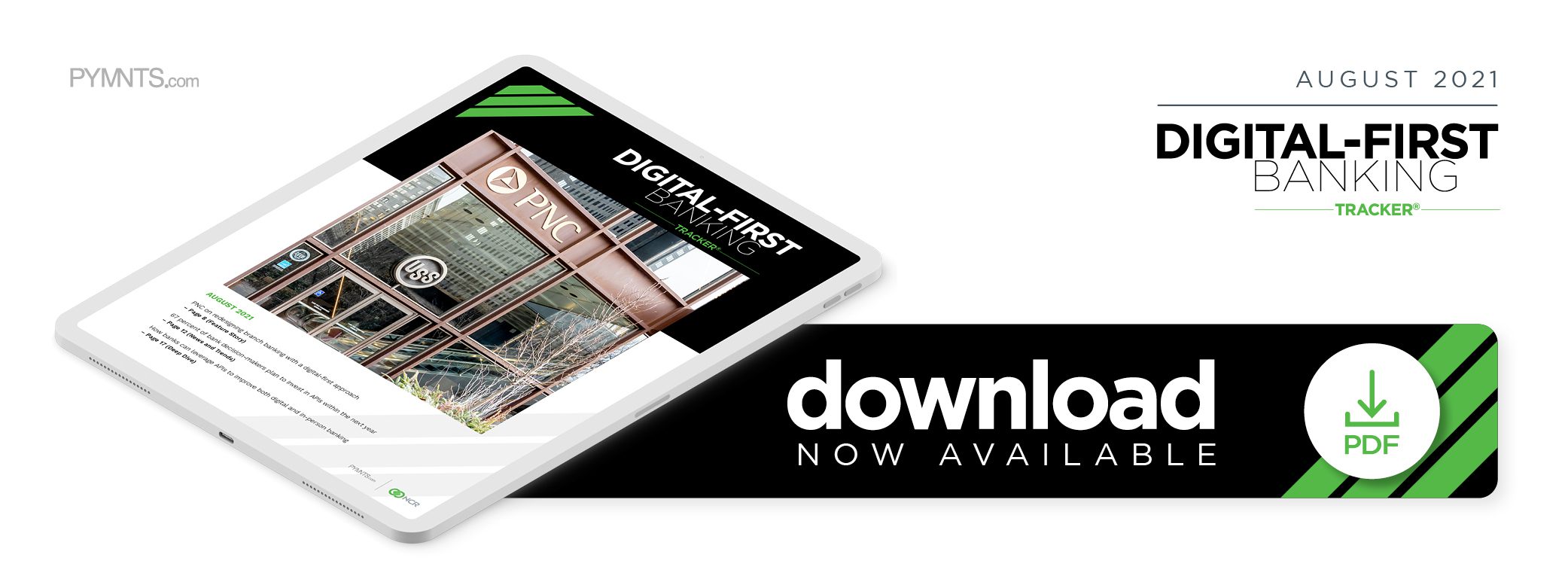PNC On Redesigning Branch Banking With A Digital-First Approach

It is no secret that banking has evolved dramatically since the pandemic struck more than a year ago, accelerating the digital transformation that was already underway.
The health crisis was not the only thing fast-tracking this digital-first movement. Challenger banks and FinTechs have emerged with a mission to entice financial institutions’ (FIs’) customers with products and services online or via app without a required branch visit.
PNC Financial Services Group Chairman and CEO William Demchak said one year ago that the diversified financial services institution plans to shutter 280 branches by the end of 2021. The closures represent a 12 percent decrease from the 2,300 branches PNC operated in 2019. Demchak noted that digital sales must offset the lost revenues for these closures to work for the firm, and the executive said in a virtual conference last fall that the strategy is working and then some.
The idea of personal service banking remains a priority for the Pittsburgh-based bank. In an interview with PYMNTS, Kevin McCann, PNC’s national territory executive, said the bank has been opening “solution centers” in place of some branches. These 2,500-square-foot locations allow customers to consult with staff and conduct transactions via mobile workstations, ATMs, kiosks and video teller machines. The concept aims to untether employees from their desks, he said, and to offer an inviting space to get financial questions answered.
“PNC is differentiating itself because we don’t think all-digital is the answer, and we don’t think traditional banking answers are right, either,” McCann said. “We come into that middle ground, where it’s more of a modern mix.”
Crafting a Better Space
The solution centers intentionally do not resemble traditional banks so as to provide the desired mix of in-person and digital business.
“We don’t have what we call ‘banker bunkers,’ with the big desk and the customer is on the other side,” he said. “We wanted to produce comfortable places as a way to encourage people to be there for nontransactional reasons. It is very much rooted in creating a space to collaborate side by side. We are trying to craft open spaces that remind you of standing around the kitchen island with the family and having a good conversation.”
Customers can still deposit checks and make withdrawals, but tellers and teller lines are gone, and so are drive-thrus. In their place are tools to perform routine banking actions along with a video teller if something more than an ATM is needed, McCann explained.
“Working in a solution center gives staff the opportunity to do what they signed up to do, which is helping people,” McCann said. “You’re not mired in the traps. You’re actually assisting a first-time homebuyer get a mortgage or send that first kid to college.”
The available self-service tools, which can do 99 percent of transactions and are efficient, have resonated with customers when paired with staff interactions, McCann said. The centers use scanners to review licenses and other identification cards to authenticate customers.
“We introduce customers to the video teller, and from there they are actually pretty good at doing it on their own,” he said. “The video teller has a wow factor, and customers routinely ask us to take a picture of them with the video teller.”
Staff members use tablets instead of desktop computers, he said, allowing them to present product and service details easily. Customers who use the centers typically have complex questions or transactions. While digital experiences make life easier, consumers still need the human side of these interactions, especially when there’s a problem, he said.
“If a first-time homebuyer is applying for a mortgage, they might have questions about what’s the right product for them and need some guidance,” McCann said. “We look at ourselves as evolving to being more about financial education centers, inside and outside the branch.”
Freeing staff members has empowered these bankers to be more present in the centers and in their communities, he said. Employees that once were behind a desk or a window now spend time locally doing financial seminars and workplace events.
Accelerating the uptake of digital tools may be the focus for FIs going forward. But the need to improve the person-to-person experience will remain. Lacking any direct engagement may make some customers feel disconnected from their banks, opening the possibility for a consumer to choose another FI.

